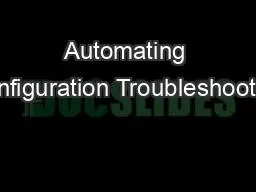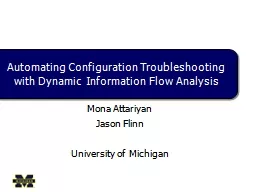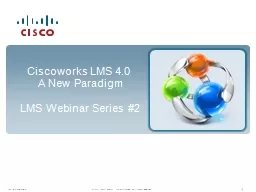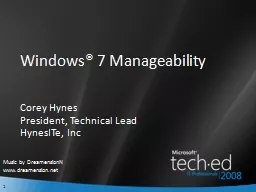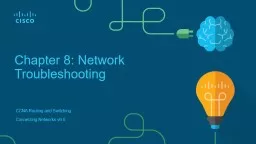PPT-Automating Configuration Troubleshooting
Author : fullyshro | Published Date : 2020-08-29
with Dynamic Information Flow Analysis Mona Attariyan Jason Flinn University of Michigan Mona Attariyan University of Michigan 2 Configuration Troubleshooting
Presentation Embed Code
Download Presentation
Download Presentation The PPT/PDF document "Automating Configuration Troubleshooting" is the property of its rightful owner. Permission is granted to download and print the materials on this website for personal, non-commercial use only, and to display it on your personal computer provided you do not modify the materials and that you retain all copyright notices contained in the materials. By downloading content from our website, you accept the terms of this agreement.
Automating Configuration Troubleshooting: Transcript
Download Rules Of Document
"Automating Configuration Troubleshooting"The content belongs to its owner. You may download and print it for personal use, without modification, and keep all copyright notices. By downloading, you agree to these terms.
Related Documents

